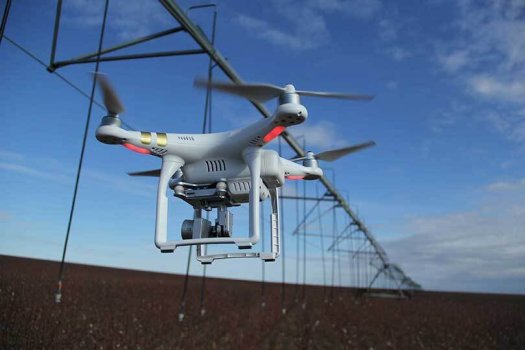K
Kathleen Martin
Guest
Look! Up in the sky! It’s a bird. It’s a plane! It’s…a swarm of robots?
Swarm robotics may be the future in agriculture, allowing farmers and ranchers to adjust the number of robots necessary to perform a variety of tasks.
“Agricultural robots, when used properly, can improve product quantity and quality while lowering the cost,” Dr. Kiju Lee, Texas A&M University associate engineering professor, said.
Lee is part of a multidisciplinary team of Texas A&M University System researchers working to establish a configurable, adaptive and scalable swarm (CASS) system of unmanned ground and aerial robots that will work collaboratively.
The work is funded through the U.S. Department of Agriculture (USDA) National Institute of Food and Agriculture National Robotics Initiative 3.0 program.
Other researchers participating in the project are Dr. Muthukumar Bagavathiannan, Texas A&M AgriLife Research weed scientist; Dr. Juan Landivar, center director at the Texas A&M AgriLife Research and Extension Center at Corpus Christi; Dr. John Cason, AgriLife Research peanut breeder; Dr. Robert Hardin, agricultural engineering assistant professor; Dr. Luis Tedeschi, AgriLife Research ruminant nutritionist; Dr. Dugan Um, associate engineering professor, Texas A&M-Corpus Christi; and Dr. Mahendra Bhandari, AgriLife Research crop physiologist.
They are developing what Lee called “technical and theoretical groundwork” for a swarm system, including a digital twin simulator for low- and high-fidelity simulations and a user-friendly interface for farmers.
Optimal applications of fertilizer, water, herbicides and more are possible through adaptive swarm robotics. She noted using smaller, unmanned machines can reduce soil compaction and better target herbicide-resistant weeds through nonchemical methods.
Continue reading: https://texasfarmbureau.org/swarm-robotics-could-help-farmers-and-ranchers/
Swarm robotics may be the future in agriculture, allowing farmers and ranchers to adjust the number of robots necessary to perform a variety of tasks.
“Agricultural robots, when used properly, can improve product quantity and quality while lowering the cost,” Dr. Kiju Lee, Texas A&M University associate engineering professor, said.
Lee is part of a multidisciplinary team of Texas A&M University System researchers working to establish a configurable, adaptive and scalable swarm (CASS) system of unmanned ground and aerial robots that will work collaboratively.
The work is funded through the U.S. Department of Agriculture (USDA) National Institute of Food and Agriculture National Robotics Initiative 3.0 program.
Other researchers participating in the project are Dr. Muthukumar Bagavathiannan, Texas A&M AgriLife Research weed scientist; Dr. Juan Landivar, center director at the Texas A&M AgriLife Research and Extension Center at Corpus Christi; Dr. John Cason, AgriLife Research peanut breeder; Dr. Robert Hardin, agricultural engineering assistant professor; Dr. Luis Tedeschi, AgriLife Research ruminant nutritionist; Dr. Dugan Um, associate engineering professor, Texas A&M-Corpus Christi; and Dr. Mahendra Bhandari, AgriLife Research crop physiologist.
They are developing what Lee called “technical and theoretical groundwork” for a swarm system, including a digital twin simulator for low- and high-fidelity simulations and a user-friendly interface for farmers.
Optimal applications of fertilizer, water, herbicides and more are possible through adaptive swarm robotics. She noted using smaller, unmanned machines can reduce soil compaction and better target herbicide-resistant weeds through nonchemical methods.
Continue reading: https://texasfarmbureau.org/swarm-robotics-could-help-farmers-and-ranchers/

